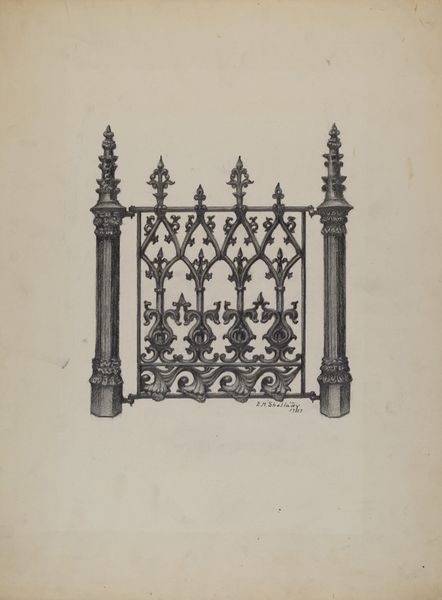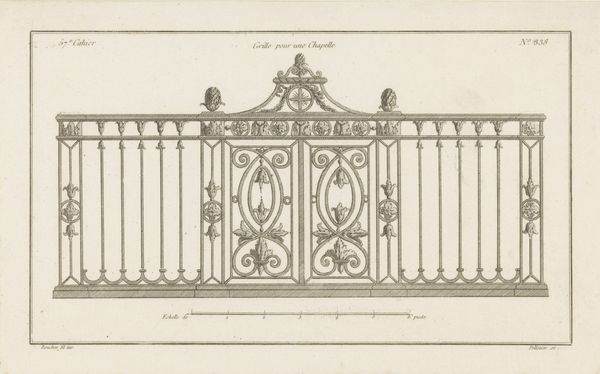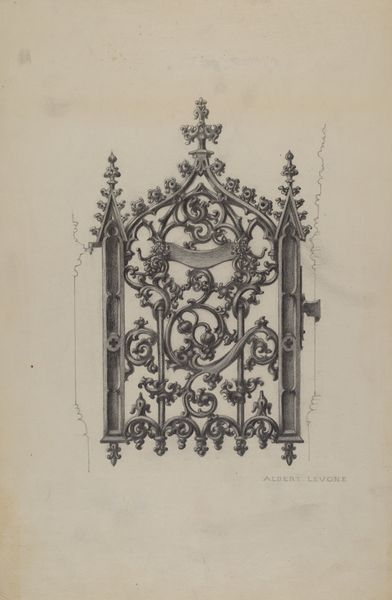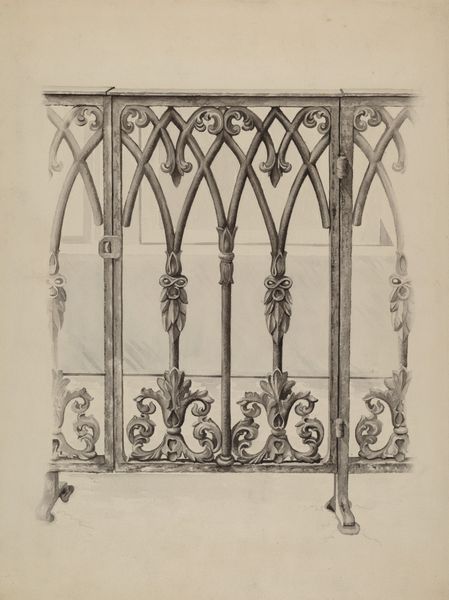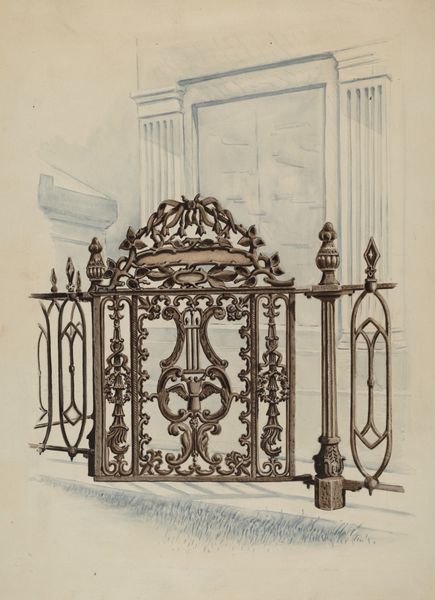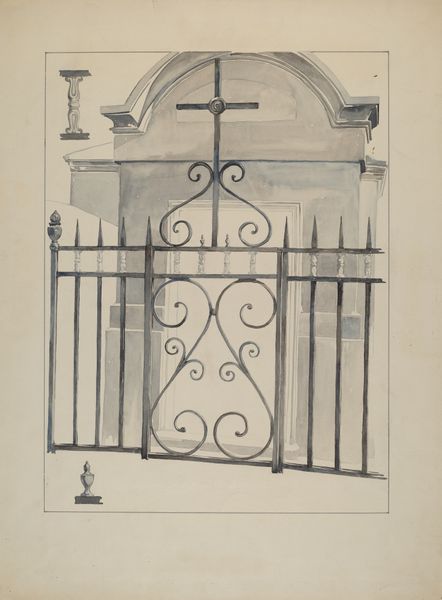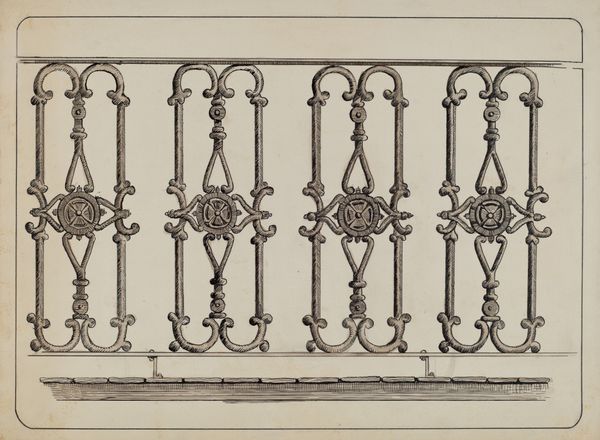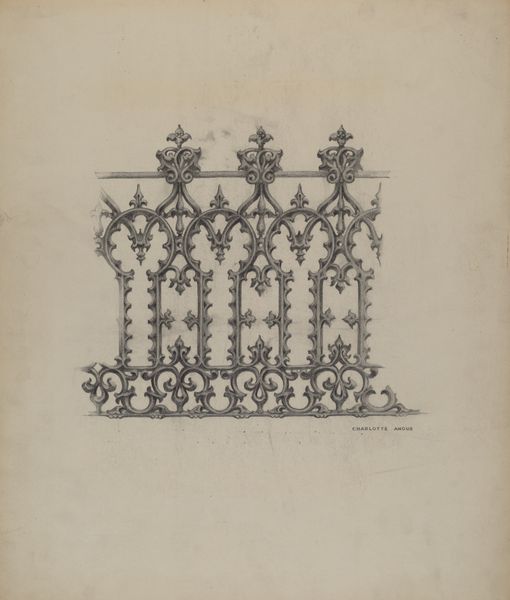
drawing, pencil
#
pencil drawn
#
drawing
#
pencil sketch
#
pencil drawing
#
geometric
#
pencil
Dimensions: overall: 30.6 x 37.5 cm (12 1/16 x 14 3/4 in.)
Copyright: National Gallery of Art: CC0 1.0
Editor: Here we have Jerome Hoxie’s "Gate," likely created between 1935 and 1942, rendered in pencil. I find the intricate details of the wrought iron fascinating, especially the play of light and shadow. What catches your eye in this work? Curator: The most compelling aspect lies in the geometric stylization—how Hoxie meticulously renders form, shadow, and texture with line alone, pushing a rather utilitarian subject into the realm of visual interest. The medium of pencil grants a soft tonal range but also presents the technical challenge of accurately depicting complex filigree. Editor: The pillars anchoring the gates are topped with stylized urns, further enriching the design. Is the symmetrical structure typical for this kind of design? Curator: Indeed, symmetry plays a vital role in the formal balance. The bilateral organization speaks to structure, order, and design principles. Consider how the curvilinear elements contrast against the linearity of the support beams; this duality generates visual tension and sustains engagement. Observe, too, how each segmented frame holds internal repetition. Do you notice how Hoxie varies density in line weight and shading technique, especially to give depth? Editor: It's almost architectural, like a blueprint. I appreciate how you've focused on the specific qualities of its lines and shading to show its composition! Curator: Precisely. By focusing on formal arrangement and execution, we reveal what it does, not necessarily what it signifies historically or culturally. The act of observing, describing, and analyzing these core features yields the most substantial interpretation.
Comments
No comments
Be the first to comment and join the conversation on the ultimate creative platform.
